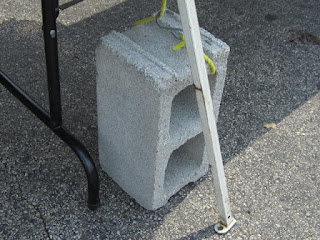COUNTERFEITS FROM OVERSEAS - WHO IS CBP?
COUNTERFEITS
FROM OVERSEAS
WHO IS CUSTOMS AND BORDER
PROTECTION?
“The U.S. Customs and Border Protection (CBP) keeps foreign
pirated and counterfeit goods from being imported to the United States.” http://www.stopfakes.gov/us-gov-agencies/cbp
“The trade in counterfeit and pirated goods threatens
America’s innovation economy, the competitiveness of our businesses, the
livelihoods of U.S. workers, and, in some cases, national security and the health
and safety of consumers. The trade in these illegitimate goods is associated
with smuggling and other criminal activities, and often funds criminal
enterprises. CBP protects businesses and consumers every day through an
aggressive IPR enforcement program. CBP targets and seizes imports of
counterfeit and pirated goods, and enforces exclusion orders on
patent-infringing and other IPR violative goods.” http://www.cbp.gov/xp/cgov/trade/priority_trade/ipr/
That said, we respond with our commentary on the above quotes:
We recognize that CBP seizes an enormous amount of
counterfeit goods at the U.S. border. It is both commendable and astounding. Click this link for a list of 2013 busts. http://www.cbp.gov/xp/cgov/trade/priority_trade/ipr/ipr_communications/ipr_nr_linklist.xml
Yet, with no system being 100% perfect, and overseas counterfeit production being rampant, importers and
exporters are still able to get past customs to deliver their counterfeit goods in whole and in
pieces.
 |
| The next time you think you have found a treasure at your local garage sale or thrift shop, check again for these removable tags |
Example:
These designer tags and stickers may be ordered separately from several web
sources. They arrive from overseas in innocuous packaging that may not be obviously detectable to the CBP. When paired with a “generic blank” purse, a simple, cheap counterfeit
purse is created. Warning: Do not use this article for instructions on assembling a counterfeit purse! Items are shown for purposes of education
and discussion and trademarks belong to the individual companies.
When counterfeit merchandise is not found and seized at the border, it then continues to cycle through the U.S. economy. First stop, we believe is a local warehouse. Then, on to a wholesaler or wholesale connection, then possibly off to a smaller local brick and mortar store.
At this point the counterfeit goods have now become
accessible to the public. “Final” shoppers may buy counterfeit goods directly
from these establishments and end the cycle right there. Likewise, smaller
resellers, such as flea market vendors are also able to purchase bulk deals in
counterfeit merchandise from these stores, individuals or wholesalers. The
cycle of “buying for cheap, selling for more” continues as these goods travel
from one person and location to the next.
Depending upon their level of experience, awareness and
education, flea market vendors may knowingly or unknowingly perpetuate this
cycle. The flea market vendor is the smallest businessperson of all, and perhaps
the most vulnerable. Goods are out in the open and possibly easy to spot. Consequently,
over the years, many flea markets and individuals have been the target of busts
for counterfeit merchandise.
We try to stop this cycle on our home front by educating our
vendors regarding counterfeit goods, merchandise sources and potential consequences.
It is an ongoing effort that involves research, education, intervention and
prevention.


Comments
Post a Comment